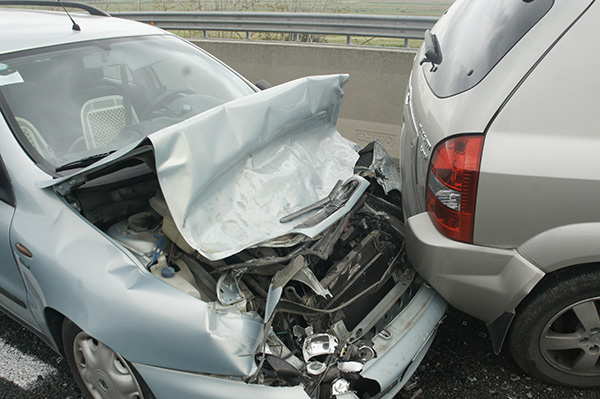
Heavy rain doesn’t just make the drive more uncomfortable—it dramatically changes how your vehicle handles. One of the most common types of accidents during rainy weather is the rear-end collision, and there’s a reason why they spike every time the skies open up. Reduced traction, longer stopping distances, poor visibility, and slower reaction times all play a part in turning wet roads into crash zones.
Even experienced drivers aren’t immune. When it comes to driving in the rain, confidence can sometimes work against you. Understanding why these collisions happen—and how to avoid them—can help keep your vehicle and everyone inside it safer during the next downpour.
Rain Reduces Traction
When your tires hit a wet surface, they don’t grip the pavement as well as they do on dry roads. This is especially true if the road has oil buildup, worn asphalt, or pooling water. As a result, your braking distance increases, and that extra space can make the difference between a safe stop and rear-ending the vehicle in front of you.
The faster you’re going, the worse the problem gets. Hydroplaning becomes more likely at higher speeds, especially if your tires are worn. Once your tires lose contact with the road, you lose control—not just of steering but also of braking.
Visibility Takes a Hit in Heavy Rain
It’s not just the road that becomes harder to manage—your ability to see other vehicles, brake lights, and hazards is also reduced. When it’s raining hard, your view of the road shrinks significantly. Glare from headlights, fogging windshields, and heavy spray from other vehicles all combine to create a much more challenging visual environment.
If you can’t clearly see the vehicle ahead of you, you might not notice it slowing down or stopping until it’s too late. Rear-end collisions happen most often when drivers can’t react in time to sudden changes—and heavy rain conditions often delay that reaction even further.
Drivers Underestimate How Long It Takes to Stop
The average car takes about 40 meters to stop from 100 kph in normal dry conditions. In the rain, that distance can double, especially if your tires or brakes aren’t in top shape. Most rear-end collisions in wet weather are caused by following too closely for the conditions.
The standard "three-second rule" between you and the car ahead becomes five seconds—or more—when it’s raining. Many drivers fail to make that adjustment, leaving too little space to react if traffic suddenly slows.
It’s not just about pressing the brakes in time—it’s about how much space your vehicle needs to physically come to a stop.
Brake Performance Changes in Wet Weather
When water gets between your brake pads and rotors, it can create a momentary loss of friction—causing a delay in braking response. In most modern vehicles, this only lasts a second or less, but that second can matter if you're already too close to the vehicle ahead.
If your brake pads are worn, your rotors are uneven, or your anti-lock braking system (ABS) isn’t functioning properly, the risk of a rear-end collision increases even more. Proper brake maintenance becomes even more important when roads are wet.
Regular inspections ensure your brakes are performing as they should, especially in areas like Kelowna, BC, where rain and snow are part of the driving experience.
Panic Stops and Sudden Lane Changes
Drivers are more likely to make quick, unplanned moves during heavy rain. Someone ahead might slam on the brakes after realizing they missed a turn or suddenly change lanes to avoid a puddle or slow vehicle. These abrupt maneuvers often result in chain-reaction crashes, where drivers behind don’t have enough time to respond.
If you're driving too close, distracted, or your tires are struggling to grip the road, you may not even notice until it's too late. That's why rainy driving requires more patience and anticipation than usual. Planning ahead, slowing down early, and staying alert goes a long way toward preventing rear-end collisions.
Want to make sure your brakes, tires, and wipers are ready for the next rainstorm? Visit A Plus Automotive in Kelowna, BC, for a full inspection. We’ll check the key systems that keep your vehicle responsive in wet conditions so you can drive with confidence—even in heavy rain.